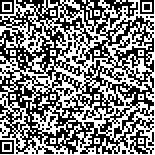下载中心
优秀审稿专家
优秀论文
相关链接
摘要

Himawari-8静止气象卫星具有高空间分辨率、高观测频次和高时效特点,对于火点检测具有很强优势。对Himawari-8卫星的3.9 μm和11.2 μm两通道亮温进行了连续时相变化研究,得出两通道的亮温在时间上的变化差值稳定且规律明显。根据两通道的亮温时相特征,考虑白天可见光对3.9 μm通道的影响,并结合火点产生时引起的亮温变化特征,提出了适用于晴空条件下改进的火点检测算法。在多处进行了此算法的实验,例如2018-11-27 T 16:40(UTC时)河北张家口市桥东区一化工厂附近发生的严重爆炸起火事件以及2019-02-28澳大利亚西南部发生的火灾事件,均快速有效的检测到了火点。实验表明,改进的火点检测算法能很好的进行火点检测,并能解决晨昏交界、冰雪下垫面、常规火源点、太阳耀光等火点检测的难题。
Himawari-8 is suitable in fire detection because of its high spatial resolution, observation frequency, and time efficiency. This paper proposes an improved fire detection algorithm based on the continuous phase change at the 3.9 and 11.2 μm measurements by Himawari-8 satellite. The brightness temperature change is stable and evident on the basis of the results on brightness temperature change in different latitudes under clear sky conditions in one day. The brightness temperature at the 3.9 μm channel changes faster than that at the 11.2 μm channel under the continuous phase change for 10 min when a fire occurs. The proposed improved fire detection algorithm for clear sky conditions considers the visible spectral effect at the 3.9 μm channel during day time. Experiments on this algorithm are conducted in several places, such as the serious explosive fire near a chemical plant in Qiaodong District, Zhangjiakou City, Hebei Province, at 16:40 (UTC) on November 27, 2018 and a fire incident in southwestern Australia on February 28, 2019, and the proposed algorithm quickly and effectively detects the occurrence of fire. Results shows that the proposed algorithm can perform fire detection well during winter, night time, and daytime.

